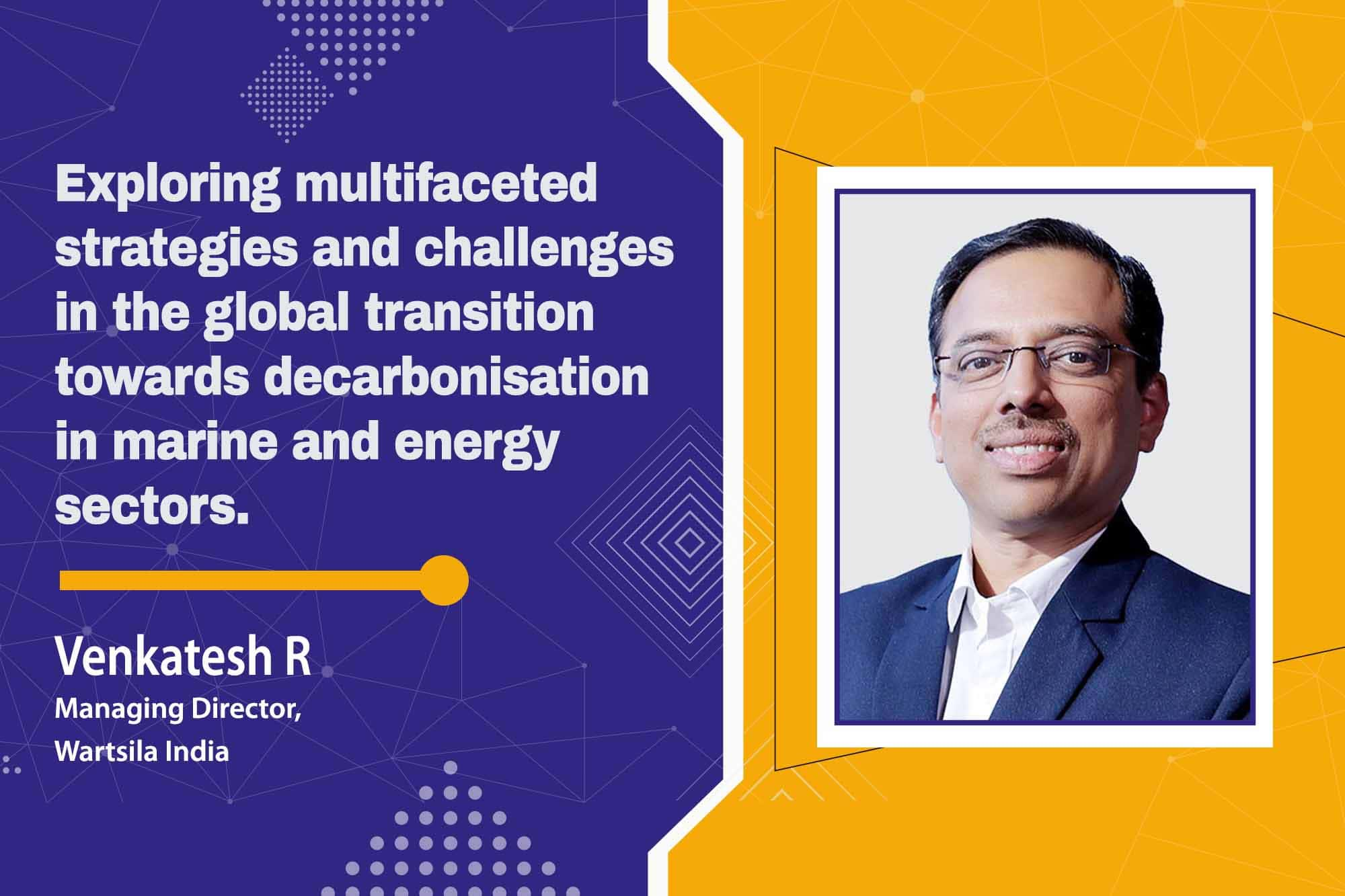Navigating the path to sustainable energy: Innovations, challenges and solutions
By EPR Magazine Editorial May 26, 2024 10:06 pm
By EPR Magazine Editorial May 26, 2024 10:06 pm

Exploring multifaceted strategies and challenges in the global transition towards decarbonisation in marine and energy sectors.
In an exclusive interview with Venkatesh R., Managing Director, Wartsila India, we explore the pioneering initiatives shaping the future of sustainable energy. With a focus on innovative technologies and lifecycle solutions, Wartsila India is at the forefront of driving decarbonisation in the marine and energy sectors. Join us as we delve into their vision, challenges, and solutions for a greener future.
In the ongoing quest for sustainable energy solutions, industries worldwide are charting a course toward decarbonisation, seeking to balance environmental stewardship with economic viability. At the forefront of this movement are initiatives driven by a multitude of stakeholders, each contributing unique innovations and insights to navigate the complexities of this transition.
One such entity, a global leader in innovative technologies and lifecycle solutions, spearheads efforts to revolutionise the marine and energy sectors. With a vast presence spanning 250 locations across 80 countries, this initiative is emblematic of a concerted global endeavour to address the pressing challenges of climate change and environmental sustainability.
Today, with escalating electricity demand driven by industrial expansion, the imperative for sustainable energy solutions has never been more urgent. The transition towards renewable energy sources such as wind and solar power is accelerating, necessitating innovative solutions to address the intermittency and variability inherent in these sources. Around the globe, energy markets are in transition, largely due to the rapidly decreasing cost of renewables. Nation-states, industry, and business are all moving towards more flexible and sustainable energy systems, with inflexible baseload generation declining.
Flexibility is more important today than it was in past power systems. As the energy mix is changing, flexibility is essential to help balance continuously fluctuating demand.Balancing power enables the maximum utilisation of renewables. The quick ramp-down time in moments of high renewable generation reduces the curtailment of wind and solar power. As a result, wind and solar power can be fully utilised in the energy system without significant losses.
The key to this transition is the development of energy storage capabilities, which enable seamless integration of renewable energy into existing grids and mitigate the impact of fluctuations in supply. From battery storage systems to hydrogen-based technologies, advancements in energy storage are poised to revolutionise the way we generate, distribute, and consume electricity.
Digitalisation is crucial for enhancing energy systems, enabling real-time monitoring, predictive maintenance, and intelligent grid management. By leveraging data analytics and machine learning algorithms, operators can optimise energy consumption, enhance grid stability, and minimise downtime. However, transitioning to sustainable energy requires significant investment in infrastructure and technology, as well as robust policy frameworks. The intermittent nature of renewable energy sources poses challenges to grid stability, necessitating innovative solutions like demand response programs and grid-scale energy storage. Despite these challenges, the momentum towards decarbonisation is building, driven by a shared commitment to combat climate change and create a sustainable future.
Authored by: Venkatesh R, Managing Director, Wartsila India
We use cookies to personalize your experience. By continuing to visit this website you agree to our Terms & Conditions, Privacy Policy and Cookie Policy.